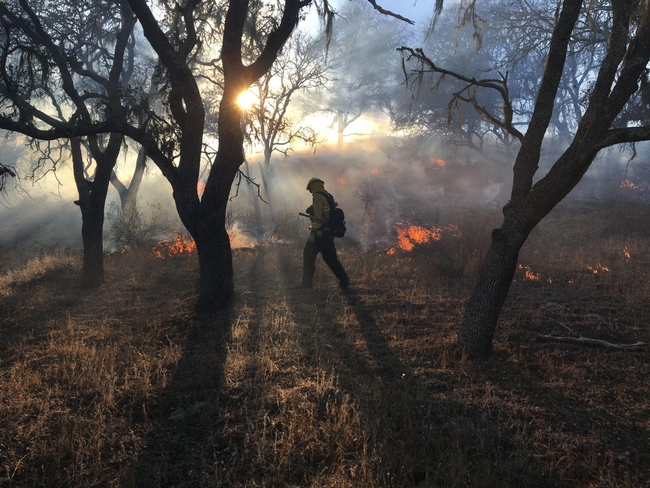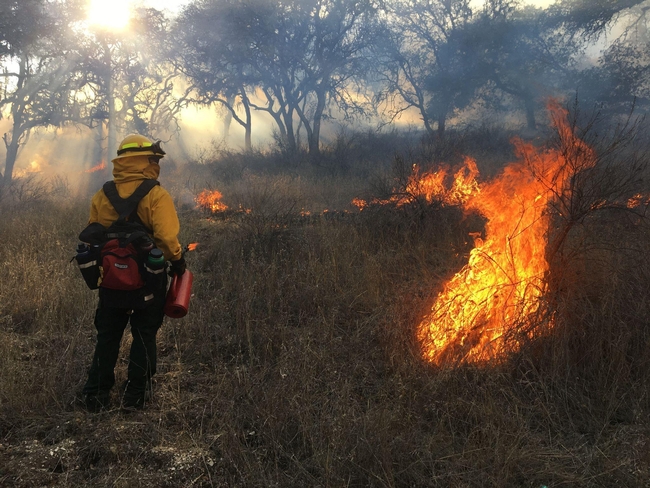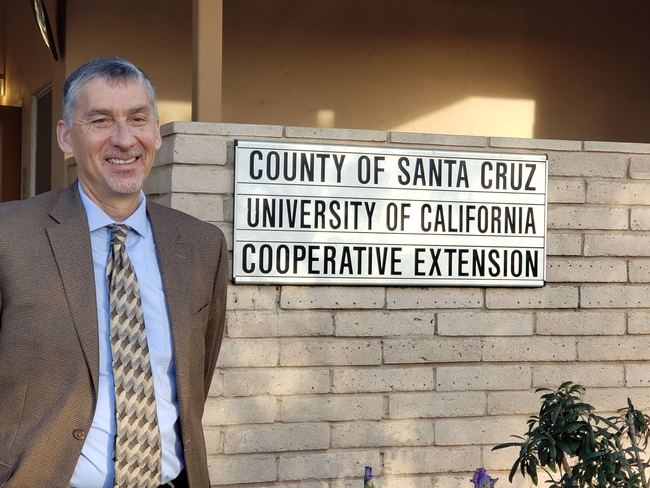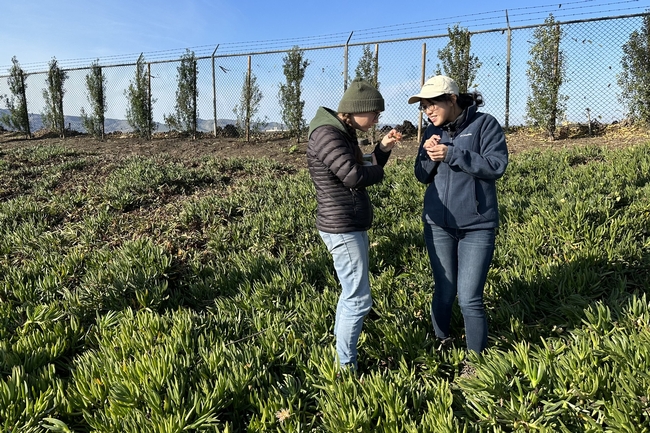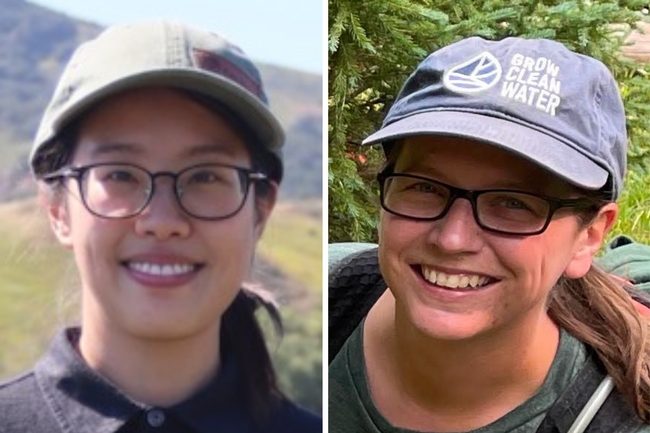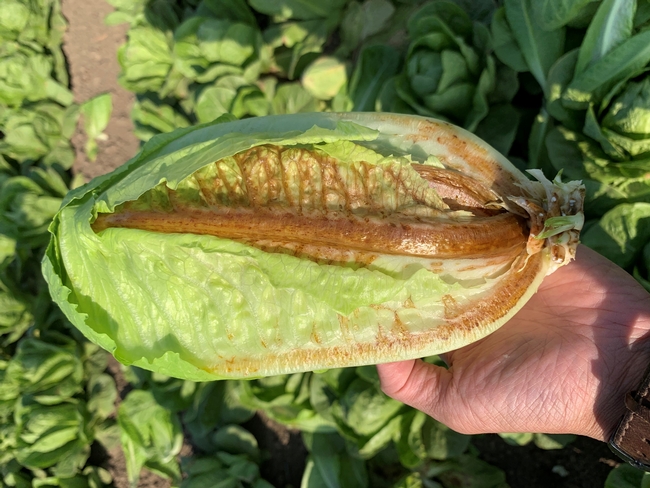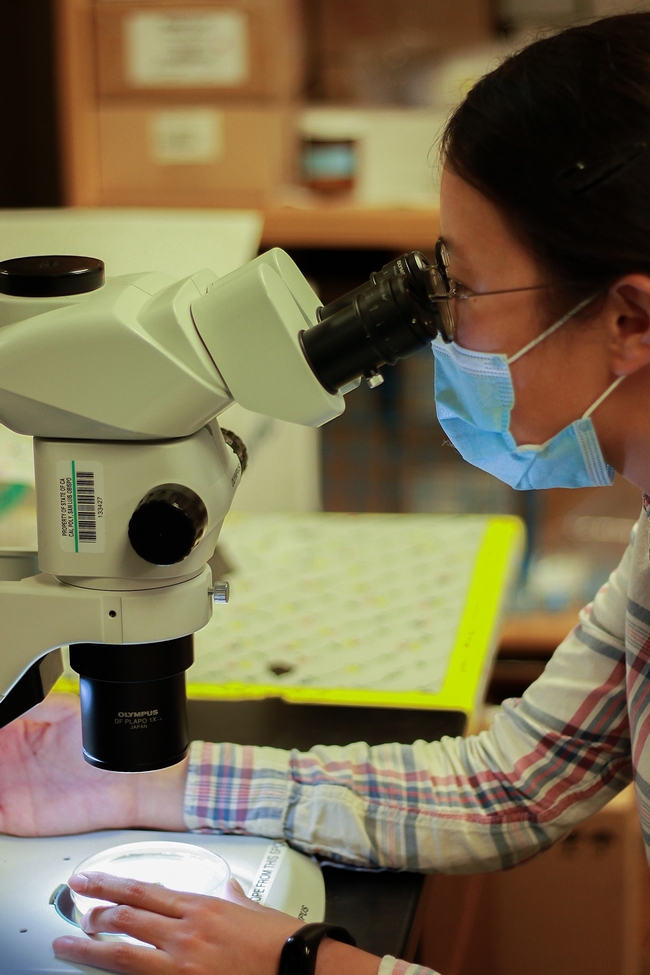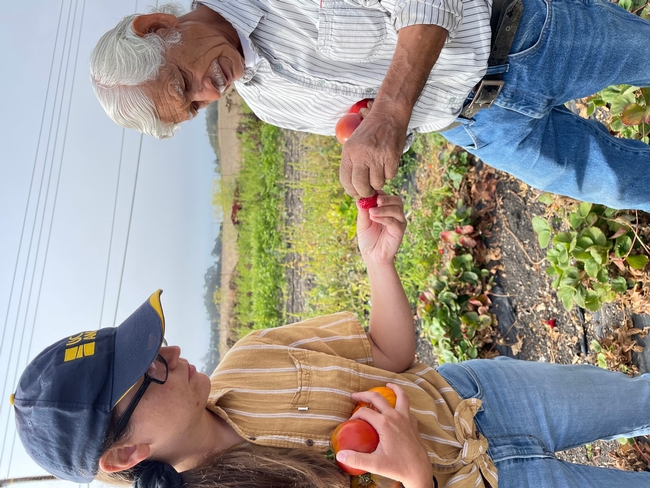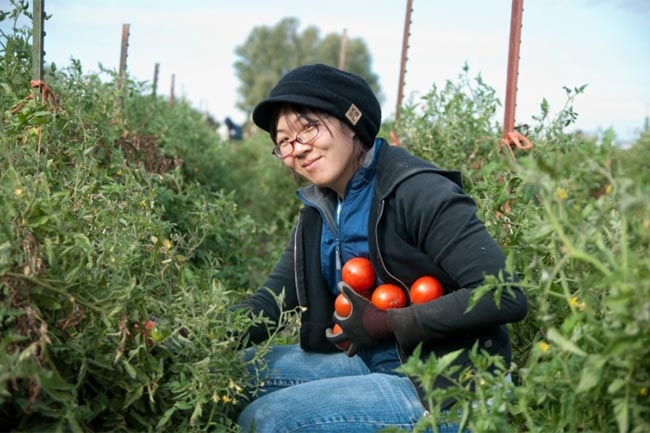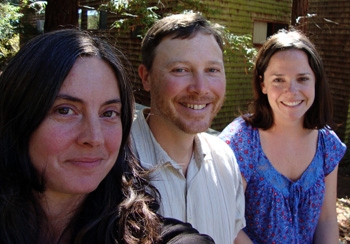Posts Tagged: Santa Cruz
Public invited to observe prescribed fire training June 4-9
The Monterey Bay area will host part of the first California Central Coast Prescribed Fire Training Exchange, or Cal-TREX.
Fire practitioners from across the state, greater North America and international locations (Spain, Honduras, Costa Rica, Ecuador) are gathering for a Prescribed Fire Training Exchange on June 3-10.
The training is hosted by the Central Coast Prescribed Burn Association, which empowers the public to build a culture of “good fire” and helps private landowners conduct prescribed burns in Monterey, San Benito and Santa Cruz counties.
Prescribed burns will be open for the public to observe on various days throughout the training, most likely June 4-9, depending on the weather. Please see the CCPBA webpage for updates on upcoming burns: http://calpba.org/centralcoastpba.
Prescribed Fire Training Exchanges (TREX) first came to Northern California in 2013, and have made a dynamic, positive cultural shift concerning prescribed fire, within both regional fire services and the general public. These “good fire” TREX events have drawn significant attention, especially in the context of more severe wildfire seasons.
After months of cross-organizational cooperative planning, participants in the weeklong training will be burning a mix of grassland, oak woodland and shrub vegetation types, and make a lasting, positive change concerning “good fire” on the Central Coast.
The TREX will provide experiential training opportunities to advance regional prescribed fire capacity, while also enhancing research to better understand the ecological response of wild plant and animal species following fire.
At this TREX event, participants will learn how to safely conduct prescribed burns in various vegetation types across three counties. Along with multiple prescribed burns, the weeklong program will include lectures and seminars on local fire ecology of plant and animal species, tribal burning practices and burn planning led by multiple burn bosses and other experts.
Burn locations may include the Nyland property (owned by Trust for Public Land and San Benito Agricultural Land Trust) near San Juan Bautista, the Santa Lucia Conservancy near Carmel Valley and the Kechun Village (owned by the Nason family) in Arroyo Seco.
Be advised, while the CCTREX works closely with the Monterey Bay Air Resources District (MBARD) to assure good smoke dispersal, smoke may be seen and present in these areas during and after a burn. Please see the CCPBA webpage for updates on upcoming burns: http://calpba.org/centralcoastpba.
BurnBot, a new technology featuring a mobile burn chamber, remote-controlled mastication and fire drone systems, will be used for the prescribed burn on June 4. To observe the Nyland burn on June 4, register at https://bit.ly/CCPBApublicRxfire. Details including time and directions will be emailed to registered participants.
Participants and partners include members of the Amah Mutsun Tribal Band and the Esselen Tribe of Monterey County, University of California Agriculture and Natural Resources, Resource Conservation District of Monterey County, CAL FIRE, local land trusts, scientists, ranchers, students, researchers, land managers and others. The CCPBA is funded by two CAL FIRE wildfire prevention grants.
For more information, contact Jamie Tuitele-Lewis, fire fuel mitigation program and forest health coordinator, at jtlewis@rcdmonterey.org or Barb Satink Wolfson, UC Cooperative Extension area fire advisor, at bsatinkwolfson@ucanr.edu.
Gonzalves begins as new UC Cooperative Extension director for Monterey, Santa Cruz and San Benito counties
David Gonzalves started on Feb. 1 as director for University of California Cooperative Extension in Monterey, San Benito and Santa Cruz counties. UC Cooperative Extension connects communities across California with UC research and science-based solutions through agriculture, natural resources, nutrition and 4-H youth development programs.
Responsible for the overall operation of UCCE educational and applied research programs in the region, Gonzalves also will build and expand partnerships with county and city governments, public agencies and community organizations.
“David brings tremendous expertise in administration, fostering strong relationships, and building effective teams,” said Deanne Meyer, interim associate vice president for programs and strategic initiatives at UC Agriculture and Natural Resources, which administers UCCE statewide. “His track record of engaging local agencies, business partners, stakeholders and community groups will be invaluable as we explore new collaborations to reach and serve more Californians.”
Gonzalves was most recently a campus building official at UC Merced. Beginning his career at the County of Merced as a fire inspector, Gonzalves worked his way up to supervising building inspector and eventually assistant development services director. Then, for the City of Merced, he filled the role of chief building official and ultimately director of development services, leading the city's Building, Planning and Engineering teams. For three years, Gonzalves served as Tuolumne County's Community Resources Agency director.
“David's past experience as an administrator in county government and at UC Merced makes him the ideal candidate for the work we do at UCCE, as he has demonstrated success in being able to successfully negotiate these two worlds,” said Lynn Schmitt-McQuitty, interim director for county Cooperative Extension at UC ANR.
Gonzalves said he looks forward to meeting with county leaders, members of local boards, growers, UC Master Gardener volunteers, 4-H members and community members to learn how UC Cooperative Extension can help meet local needs.
“My big picture goal is to allow UCCE advisors, administrative teams and local county leaders to have a coordinated approach to our local challenges and successes,” Gonzalves said. “Our efforts will concentrate on freeing up our research teams' calendars to ensure they can continue producing cutting-edge accomplishments here in the tri-county area.”
Based at the UCCE Monterey County office in Salinas, Gonzalves can be reached at dgonzalves@ucanr.edu or (831) 392-5916.
New UCCE advisors bring fresh ideas to protect lettuce from INSV, Pythium wilt
Salinas Valley lettuce growers lost about $150 million in 2022 due to diseases
A stormy winter could portend another devastating year for the lettuce industry in the Salinas Valley, which saw approximately $150 million in lost gross revenue in 2022 due to INSV (impatiens necrotic spot virus) and associated diseases. Recent drenching rains might mean more weeds – overwintering “reservoirs” for the tiny insect, the Western flower thrips, that carries INSV.
Or the extreme precipitation could benefit growers, as thrips in the soil – during their intermediate stage of development – might be drowned in the waterlogged fields.
As with so many aspects of the INSV crisis, the ultimate effects of flooded fields on thrips populations remain unknown.
“We don't know if thrips are just so persistent and so stable in that pupal stage that maybe they will emerge unaffected,” said Kirsten Pearsons, University of California Cooperative Extension integrated pest management farm advisor for Santa Cruz, Monterey and San Benito counties. “There's just so much about their biology and ecology in the Salinas Valley that we just don't know.”
The mystery of thrips, INSV and soilborne diseases (namely Pythium wilt) is why UC Agriculture and Natural Resources assigned Pearsons to the area last November and hired Yu-Chen Wang in October as UCCE plant pathology advisor for the three counties.
“They're stepping in at a critical moment,” said Richard Smith, the region's UCCE vegetable crop production and weed science advisor who retired in January after a 37-year career. “They've gotten grants funded already – and that's just incredible. They're hitting the ground running.”
Experienced in disease diagnosis and collaboration with growers and industry partners, Wang said her pathology background – paired with Pearsons' entomology expertise – will be crucial in addressing INSV and other diseases.
“It is important for Kirsten and me to work together and provide different insights for the vector and the pathogen, respectively,” Wang said.
‘It's going to take everything to get a crop'
One priority is untangling the dynamics of INSV and Pythium wilt co-occurrence – the subject of ongoing research by JP Dundore-Arias, a plant pathologist at California State University, Monterey Bay. While the vegetables may tolerate one disease or the other, their one-two punch often deals the lethal blow.
“The challenge is – which is why it's great to have Yu-Chen and Kirsten – is that we have so many problems now, whether it's Fusarium (wilt), or Verticillium (wilt), or Pythium, or INSV,” said Mark Mason, pest control adviser for Nature's Reward, which primarily grows lettuces on 5,000 acres across the Salinas Valley.
Mason said that co-infections on his crops (sometimes with three or four diagnosed diseases) make it difficult to assign monetary damages to a specific pathogen, but he noted he has seen fields with “100% loss.” According to the Grower-Shipper Association of Central California, about 11,500 acres were deemed not harvestable in 2022, representing 12% of lettuce industry acreage.
Given the gravity and complexity of the disease dilemma, Pearsons said she has been fielding calls from growers seeking new and better solutions – ways to improve existing tools, techniques borrowed from other crop systems, and additional biological or chemical means of control.
And although there are a couple of pesticides that manage the disease-carrying thrips reasonably well, growers and researchers are worried about their diminishing efficacy due to overuse. Plus, they only constitute a short-term fix.
“Managing the thrips will only reduce the amount of INSV that can get transmitted,” Pearsons explained. “You can kill 99.9% of the thrips, but you get one thrips that has INSV that enters a field, and now you have an infected lettuce plant. All of the thrips are going to come and they can spread it from there; pesticide slows things down, but it's not going to eliminate it.”
Finding disease-tolerant lettuce cultivars is a more sustainable approach. Trials conducted last year by Smith, Wang and others identified several varieties that appeared to hold up well to Pythium and INSV. While additional research could maximize their potential benefit, Wang said even the hardier cultivars will lose their resistance over time, and a multi-layered INSV strategy with “integrated management tools” is crucial.
“We realized, when this thing started happening, that we cannot spray our way out of this problem,” Mason said. “We need varieties; we need management practices; we need pesticides…it just seems like it's going to take everything to get a crop.”
Weeds key to disease control
An all-hands-on-deck approach helped control thrips-harboring weeds last winter. With fields drying out from January storms, Smith said communities must get back to weed management – with a focus on prominent weed hosts for INSV and neglected areas adjacent to farms. Hotspots of infection last year were traced to industrial lots that were overlooked during the weeding process.
“People can't lose sight of the fact that we still need to be controlling the weeds in key areas, because that's the reservoir of the virus during the winter,” Smith said. “We have to stay on task with that.”
Yet despite the diligent weed abatement, crop damage from INSV and Pythium was widespread in 2022, and Smith said it's “very possible” that high heat during the summer was a contributing factor to especially prevalent disease in fall. Thrips populations tend to thrive in warmer weather, Smith said, but much more research needs to be done to understand the basic biology of the insect, including how they acquire the virus and how they spread it.
High hopes for future
Pearsons cited the work of Daniel Hasegawa, a research entomologist with the U.S. Department of Agriculture, who leads teams in monitoring thrips populations in several locations across the Salinas Valley. Currently the counting of thrips on sticky card traps is done manually, but Pearsons and Mason mentioned the possibility of using AI and machine learning to expedite that process.
Mason said that the grower community is excited about the new technologies and ideas that Pearsons and Wang are bringing to the region. As a participant in the search for candidates to fill the advisor positions, Mason said “they were, in my opinion, by far the best fit for what we were looking for.”
“I hope they stay here for 30 years,” he added.
The new advisors both noted the palpable energy and cooperative spirit in the Salinas Valley to proactively meet the challenge.
“Looking to the past, there have been other outbreaks and diseases that they've managed to overcome,” Pearsons said. “These farmers are resilient and creative and I fully believe that lettuce will still be growing here for years to come – it might look a little different, and it might take a little bit of a painful period to get to that point, but I think that we're going to be able to come up with some solutions.”
And while there are concerns that some lettuce growers might decide to leave the region, Wang said she also believes in the industry's strong roots and rich history.
“Salinas Valley has had a beautiful climate for lettuce for so many years; there are some undeniable advantages here,” she said. “This is still the best place in the United States – and maybe the world – to grow lettuce.”
UC student farms seed innovation
Back in the 1960s and 1970s, when organic was a foreign word to most Americans, students at UC Davis and UC Santa Cruz were part of a wave of environmental activism that sought alternatives to agricultural methods that distanced people from farms and relied on heavy use of chemical pesticides and fertilizers.
In 1971, student enthusiasm for a garden at UC Santa Cruz that used natural cultivation methods grew so much so that 14 acres were set aside for the UC Santa Cruz Farm and Garden to create more opportunities to research and teach organic farming. Meanwhile, a student-led seminar at UC Davis on alternative agriculture mushroomed into a group that lobbied campus administration for land to create a farm that would explore sustainable agriculture. With support from the College of Agricultural and Environmental Science, the UC Davis Student Farm formed in 1977 on 20 acres of what was then a remote corner of campus.
In the decades that followed, these student-led movements helped spur the growth of organic farming and formed the foundations for innovative sustainable agriculture research and education programs at UC Davis and UC Santa Cruz that have served as models for other universities.
Read more and view slideshow at UC Newsroom
Growing organic farmers
Well bef
ore Safeway launched a line of organic products or Craigslist posted openings for school garden coordinators, UC Santa Cruz was training students for careers in organic farming.The UC Santa Cruz Apprenticeship in Ecological Horticulture started in 1967 when the concept of organic was in its infancy. Forty-three years later, organic has gone mainstream and the apprenticeship program is more popular than ever.
A recently published study looking at the apprenticeship’s last 20 years found that a large percentage of its alumni are still involved in growing and marketing organic food and teaching others how to do so.
“It’s like an incubator,” said lead study author Jan Perez, research specialist with the UC Santa Cruz Center for Agroecology and Sustainable Food Systems. “It’s a place for people to really experiment and live their values and be in a supportive community.”
The six-month residential apprenticeship program, which the center runs in conjunction with UC Santa Cruz Extension, features hands-on training in gardens, greenhouses, orchards and fields. The program combines theoretical and practical instruction, with students not only studying in the classroom but also taking fields trips and marketing organic produce on campus.
Of 299 alumni surveyed, more than 80 percent have done some type of farming or gardening work since graduating, with 65 percent still doing this work. Forty-two percent said they created jobs that did not previously exist and 35 percent are working in an educational area, according to the study in the Journal of Agriculture, Food Systems, and Community Development.
For example, two apprentice alumni started Pie Ranch, a working Peninsula farm that educates high school students from San Francisco to Santa Cruz about sustainable agriculture. The farm, which grows ingredients for pies on its pie-shaped ranch, even has its own apprenticeship program.
“They’re really spreading what they’ve learned,” Perez said.
Meanwhile, interest continues to spread in the Apprenticeship in Ecological Horticulture. Last year, applications rose to 187 for more than 30 slots. This year’s application period closed Thursday (Sept. 30).
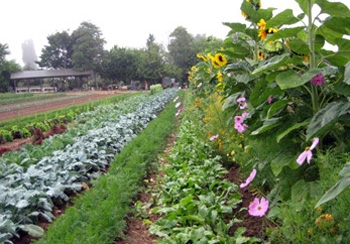
The apprenticeship program takes place at UC Santa Cruz's farm and Chadwick Garden

